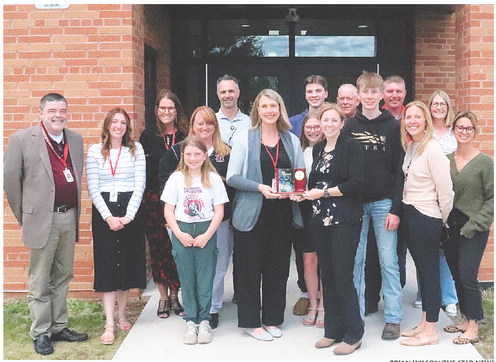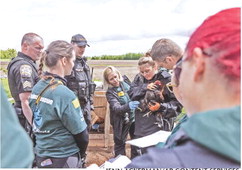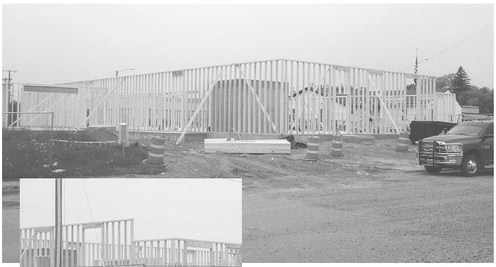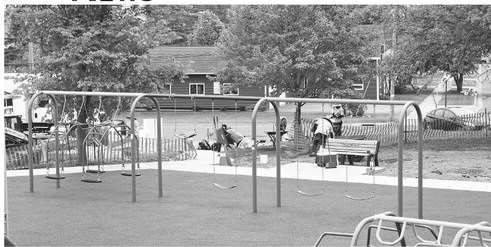ticularly severe labor shortage. One ….
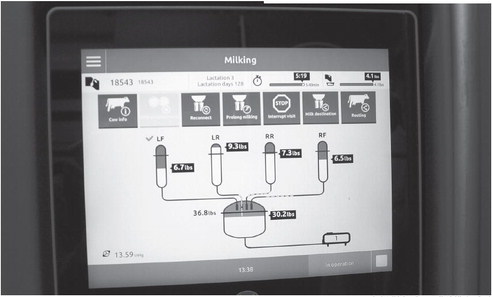

ticularly severe labor shortage. One potential solution is to replace labor with automated robot milkers. Another problem on the horizon is a lack of replacements for farmers who are aging out of dairy. Stuttgen noted that the average dairy farmer is age 52 and has been farming for 26 years.
In spite of these challenges, Stuttgen said the farmers she talks to are “generally optimistic and seem to want to be farming.” They are “willing to learn” and network with each other through organizations to stay informed. As far as technology on farms, Stuttgen said farm technology “adoption and access is faster than ever” thanks to the internet and that Taylor County is “on-par” with the rest of the dairy industry’s technological advancements.
While technological innovations show promise, some farmers are avoiding the cost of going all in by balancing their bottom lines with a blend of new technology and traditional practices.
Ryan Klussendorf of Medford operates a family farm of 120 cows. He rotationally grazes his cows on 200 acres.
Klussendorf has been aware of robotic milking systems since 2008 but chooses not to purchase them. On his decision to stick with a traditional parlor, he said, “Everyone has what works for them. This works for us.” Klussendorf listed the high cost of robotics as the predominant deterrent, stating, “It’s a huge capital investment.” He noted that his parlor is paid off, so the idea of incurring debt to replace a functional and paid-for system is unappealing. Additionally, his existing infrastructure is not conducive to a shift to robotic milking. While he has seen grazing systems implement robotic milking systems, his parlor is not centrally located, which would not be ideal for a robotic milking system. Again, changing this would require a massive investment.
Although he chooses to milk in a traditional parlor, Klussendorf employs other technology to augment the quality of cow care. All of his cows wear an ear tag that measures their reproductive cycle, temperature, rumination, eating, and movement. He evaluates this data through an app on his phone, which alerts him of any abnormalities. The health alerts typically precede any outward symptoms.
To maintain pasture quality, Klussendorf makes use of another app on his phone that measures the height of the grass through a device on his four wheeler and suggests pasture rotations. A pasture rotation means adjusting the fences so the cows have access to a select area of grass. This is done so areas that need time to replenish are not overused.
Klussendorf manages his field so that “everything is working together for the benefit of the ecosystem, cows and people.” Some sustainable methods he practices in his field are cover cropping, no-till planting, and the creation of pollinator habitats. Cover cropping means planting crops aside from the harvested crop, such as corn, to enrich and maintain the soil. In a no-till system, farmers do not till the soil, limiting erosion. According to Klussendorf, no-till combined with cover cropping gives “flexibility with extreme weather” by “building organic matter and soil structure.” As far as pollinator habitats, Klussendorf puts “native plants and wildflowers in unproductive areas” of his field to improve the overall ecosystem.
Artificial intelligence on the horizon
“Artificial intelligence is going to change dairying dramatically,” said Mark Peissig, owner of Bob’s Dairy Supply.
Peissig explained that artificial intelligence makes predictions about each cow’s health by using data gathered from an ear tag and robotic milking system about each cow’s movement, food consumption, and milk content. The data is sent to a cloud and compared to every other herd in the world. From the worldwide data set, artificial intelligence projects each cow’s health. One goal of using artificial intelligence is to be able to forecast if a cow will be sick at least 48 hours in advance of symptoms. This way, preventative care can be administered. While this technology is still in development, Peissig noted that “it is just the start.”
David Trimner, General Manager of Miltrim Farms also emphasized artificial intelligence’s burgeoning application in dairy, stating, “I am very excited to see as AI continues to develop how that’s going to change the farm industry,” and “autonomous tractors are not that far away.”
When describing the impact artificial intelligence will have on Miltrim Farms, Trimner explained, “There are certain tasks that when AI progresses far enough it will make the decision making and management of them much easier. Particularly on the camera side, using camera images to monitor things on a higher level. Another big one I think about is how you utilize chemicals to the best of your ability. You may use 1/10th the amount of a chemical because of how precise it is.”
Medford Cooperative anticipates using artificial intelligence technology. Carl Kass, director of Ag, said, “It’s going to be on the horizon. It’s the track we are trending to. We will [implement it], but I think that’s a few years away for us.”
A recurring theme of efficiency underlies all of these technologies, whether it pertains to labor, resource usage, or crop growth. If there is one takeaway aside from interesting technology developments, it is that artificial intelligence, with its unprecedented efficiency and precision, has the potential to entirely transform the dairy industry (and every other industry) very soon.
It remains to be seen what impact these changes will have on the future of farmers and rural communities.

Ryan Klussendorf
